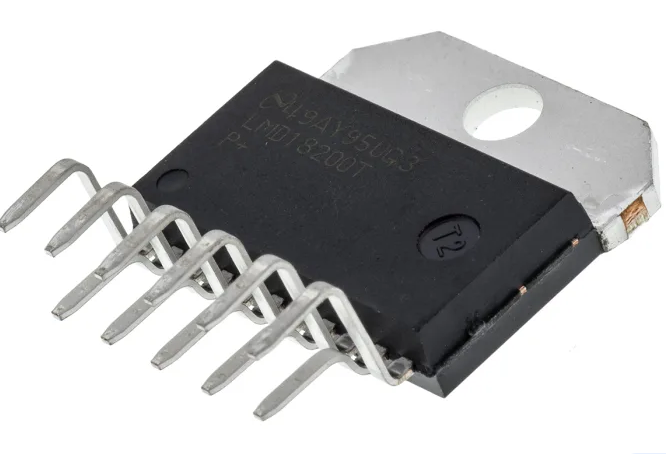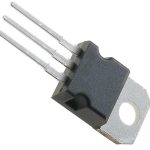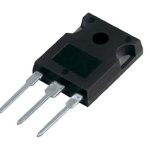LMD18200T/Nopb is a widely used IC chip for various electronic applications. However, the cost of this chip can be quite high, putting a strain on the budgets of many companies. If you’re looking to lower your costs and negotiate with an IC chip supplier to get cheaper LMD18200T/NOPB, it’s essential to understand the market and prepare a negotiation strategy that works for you. In this article, we’ll provide you with a step-by-step guide on how to accomplish this task.
1. Understanding the Market
Researching the market demand for LMD18200T/Nopb:
Before negotiating with a supplier, it’s crucial to research the demand for the product. You can use different market research tools for this purpose, such as online surveys, interviews with users, and industry reports. This information will help you understand the current demand for LMD18200T/Nopb and give you an idea of the short-term and long-term market trends.
Identifying potential IC chip suppliers:

Once you have a good understanding of the market, you can start identifying potential IC chip suppliers, for example, the Estartrade-ic.com. You can use search engines, directories, online marketplaces, and trade shows to find several suppliers. It’s highly recommended that you screen and shortlist suppliers based on their experience, technical capabilities, and reputation.
Analyzing supplier pricing and market competition:
After shortlisting potential suppliers, it’s time to analyze their pricing and market competition. You can use pricing data from different online sources, negotiate with other suppliers, or seek the advice of industry experts. It’s essential to compare the prices and terms of multiple suppliers to have a better understanding of the market and ensure you get the best deal.
2. Preparing the Negotiation Strategy
- Defining your negotiation objectives:
Before entering into a negotiation, it’s essential to define your negotiating objectives. This step involves identifying what you want to accomplish, such as a lower price, a larger order, a longer payment term, or a combination of these. It’s essential to set realistic and measurable objectives, making it easier to evaluate the success of the negotiation.
- Establishing your negotiation BATNA (best alternative to a negotiated agreement):
Another critical aspect of preparing your negotiation strategy is to establish your best alternative to a negotiated agreement (BATNA). BATNA refers to the course of action you will take if negotiations fail. Establishing a BATNA is essential as it gives you leverage and helps you evaluate whether the negotiated agreement is better than the alternative.
- Determining your negotiation limits and concessions:
Finally, you need to determine your negotiation limits and concessions. What are you willing to compromise? What is your “walk-away” position? And what are the trade-offs you can accept? Establishing these limits will guide the negotiation and help you achieve your objectives while ensuring the deal is beneficial to both parties.
3. Building the Relationship with the Supplier
- Establishing open communication with the supplier:
When negotiating with a supplier, it’s essential to establish open communication. Open communication allows for the exchange of information and positions, leading to better understanding and agreement. You should make an effort to establish regular communication channels such as email, phone, or video calls to ensure a smooth negotiation process.
- Understanding the supplier’s priorities and concerns:
Another critical aspect of building a relationship with a supplier is understanding their priorities and concerns. What are they trying to achieve, and what problems are they facing? Understanding this information can help you craft a deal that benefits both parties. You should ask questions and listen actively to what the supplier has to say to gain a better understanding of their position.
- Building trust and rapport:
Finally, building trust and rapport is essential in any negotiation. You should make an effort to establish a good relationship with the supplier by being honest, transparent, and reliable. You can also offer concessions or incentives that show your willingness to work together and build a long-lasting partnership.
4. Presenting Your Case
- Identifying Your Key Negotiation Points:
When negotiating with an IC chip supplier, it’s essential to identify your key negotiation points beforehand. For example, you may want to mention that you’re looking for bulk pricing, or that you’re a loyal customer and have been purchasing from the supplier for a long time. These points can form the foundation of your argument and help you achieve the best possible deal.
- Making a Compelling Argument for Why You Need a Better Price:
Merely stating that you want a better price is unlikely to persuade your supplier to lower their pricing. Instead, you need to make a compelling argument that highlights the benefits of a reduced price to your business. Perhaps you can make the argument that cheaper IC chips will help you be more competitive or allow you to offer more affordable products to your customers.
- Addressing Any Potential Objections or Concerns the Supplier May Have:
Suppliers may have legitimate reasons for not lowering their prices. Addressing any potential objections or concerns that your supplier may have is critical. Be prepared to offer counterpoints that address their concerns while still making a compelling argument in favor of a better price.
5. Negotiating the Deal
- Using Effective Negotiation Tactics:
Effective negotiation tactics include utilizing the principle of reciprocity, coming in with the right attitude, and building rapport with the supplier. Ensure that you are clear about the value that the supplier provides to your business, and be prepared to offer concessions in exchange for a better price.
- Understanding the Bargaining Process and Reaching a Mutually Beneficial Agreement:
The bargaining process typically involves several rounds of offers and counteroffers, with each party trying to secure the most favorable terms possible. The goal is to reach a mutually beneficial agreement that works for both parties. Remember that negotiating with a supplier is not a one-time process but rather an ongoing effort to maintain a positive relationship.
- Finalizing the Details and Securing the Deal
Once you’ve reached an agreement, finalize the details and secure the deal by getting everything in writing. Ensure that both parties understand what’s expected and that the agreed-upon terms are clear and concise.
6. Monitoring the Relationship and Performance

Establishing Clear Expectations and Performance Metrics:
Establish clear expectations and performance metrics upfront with your supplier. This includes everything from payment terms to product quality and delivery times. By laying out clear expectations, you reduce the chances of misunderstandings and improve your ability to monitor supplier performance.
Regularly Monitoring Supplier Performance:
Regularly monitoring supplier performance is essential because it helps you identify potential issues before they become serious problems. You may want to track metrics such as product quality, on-time delivery, and customer complaints to gauge supplier performance accurately.
Addressing Any Issues or Concerns as They Arise:
If you notice any issues or concerns with your supplier’s performance, address them as soon as possible. This includes articulating specific concerns and giving your supplier the opportunity to correct the issue. By addressing issues quickly and efficiently, you can maintain a positive relationship with your supplier.
7. Maintaining a Positive Relationship with the Supplier
Maintaining Ongoing Communication and Relationship Building:
Maintain ongoing communication and relationship building with your supplier. This includes everything from sending regular emails to checking in on their business and building rapport. A positive relationship with your supplier can go a long way in securing better pricing and a better overall business relationship.
Showing Appreciation for the Supplier’s Contributions:
Remember to show appreciation for the supplier’s contributions to your business. This includes recognizing their efforts to meet your demands, thanking them for their assistance, and formally acknowledging their contributions. Showing appreciation can help build a positive relationship with your supplier and improve your ability to negotiate in the future.
Exploring Opportunities for Future Collaboration and Partnership:
Finally, explore opportunities for future collaboration and partnership with your supplier. This could include undertaking joint projects or working together to develop new products. By exploring these opportunities, you build a better business relationship and create a more collaborative supplier network.
Conclusion
In conclusion, negotiating with an IC chip supplier to get cheaper LMD18200T/Nopb requires a strategic approach. You need to take the time to research the market, prepare your negotiation strategy, and build a good relationship with the supplier. By doing so, you can ensure a successful negotiation that meets your objectives.



